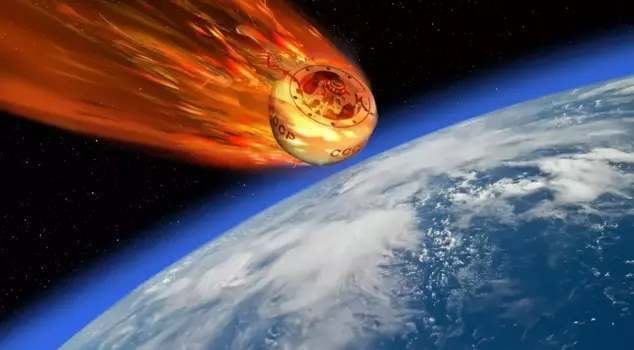
08.05.2025 10:51
The Soviet spacecraft Cosmos 482, which was launched in 1972 to go to Venus but remained in Earth's orbit, is preparing to fall to the ground with its 500-kilogram piece. Russian officials report that the module, expected to fall by May 14, will descend at a speed of 242 kilometers per hour, with areas including Egypt, Syria, Turkey, and Azerbaijan among the potential landing sites.
In 1972, Kosmos 482, launched from the Baikonur Cosmodrome, was intended to be sent to Venus by the Russians during the space race against the USA. Due to a technical error, Kosmos 482 deviated from its course and became stuck in Earth's orbit. It was reported that it would fall by May 14. An expert speaking to BBC Russian stated that there is a risk of the vehicle falling into populated areas.
STUCK IN EARTH'S ORBIT
Although the initial stages of the launch went as expected, the additional power block in the rocket, which was supposed to work when exiting the orbit, failed, and Kosmos 482 became virtually stuck in Earth's orbit. At that time, the Soviets used the name Kosmos for failed space attempts, only changing the numbers.
SPACECRAFT SPLIT INTO 4 PARTS
According to NASA's website, the spacecraft split into four parts. While two remained in the lower sections of Earth's orbit, the other two burned up in the atmosphere within 48 hours.
WEIGHT OF THE PARTS IS 500 KILOGRAMS
Georgi Trişkin, the manager of a popular Telegram channel that publishes on space topics, stated, "Parts of the titanium fuel tanks exited the orbit and fell to New Zealand within a few days." Additionally, according to NASA data, the remaining parts of Kosmos 482 weigh approximately 500 kilograms.
TURKEY IS ALSO AT RISK
Due to the remaining parts being fire-resistant, Kosmos 482, which is expected to descend weighing 500 kilograms, is anticipated to fall into populated areas. Russian officials predict that Kosmos 482 will fall in the regions of Egypt, Syria, Turkey, and Azerbaijan.
IT WILL FALL AT A SPEED OF 242 KILOMETERS
According to calculations, the module, expected to fall between May 8 and May 14, is thought to hit the ground at a speed of 242 kilometers per hour and create an energy explosion equivalent to a few hundred grams of TNT.